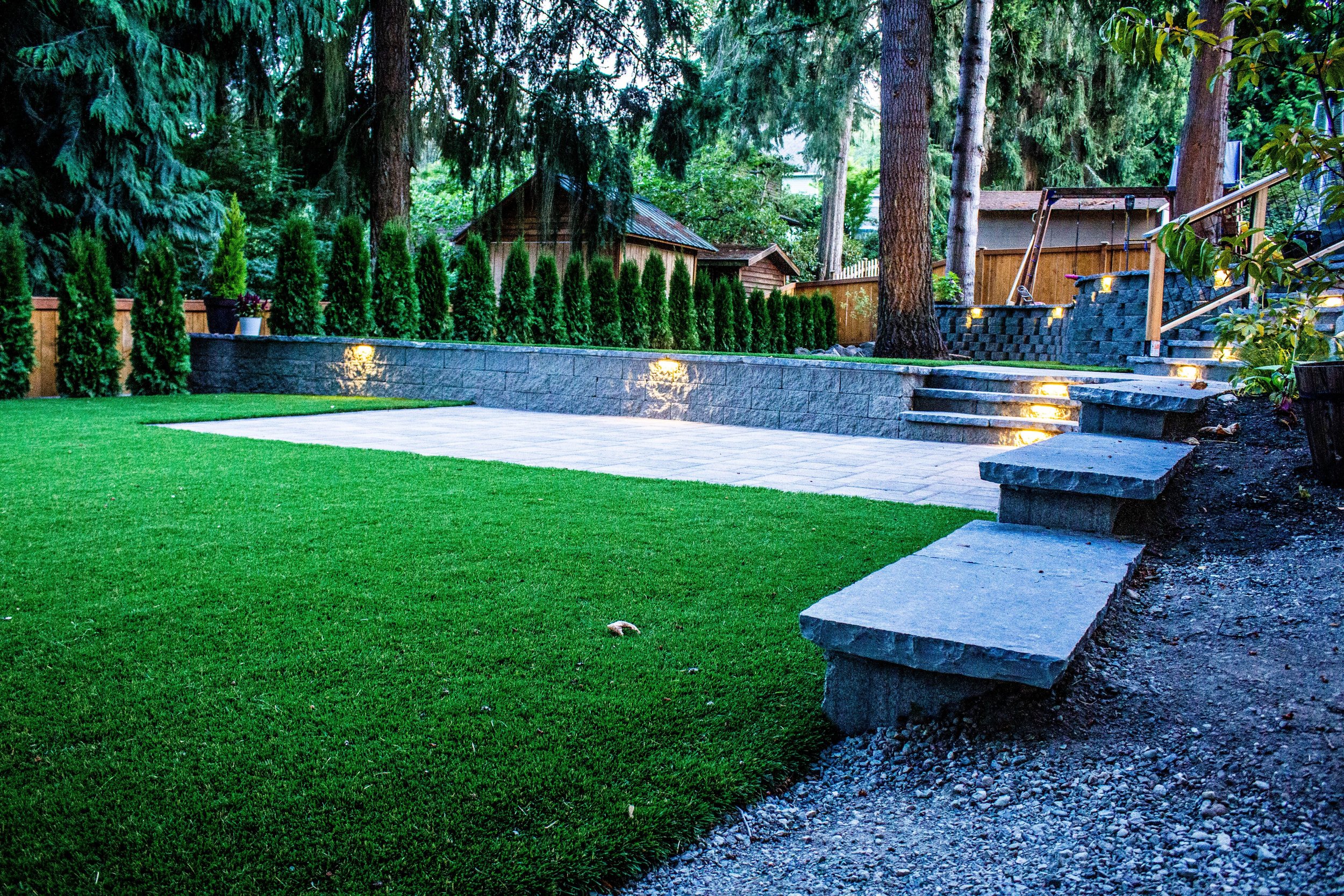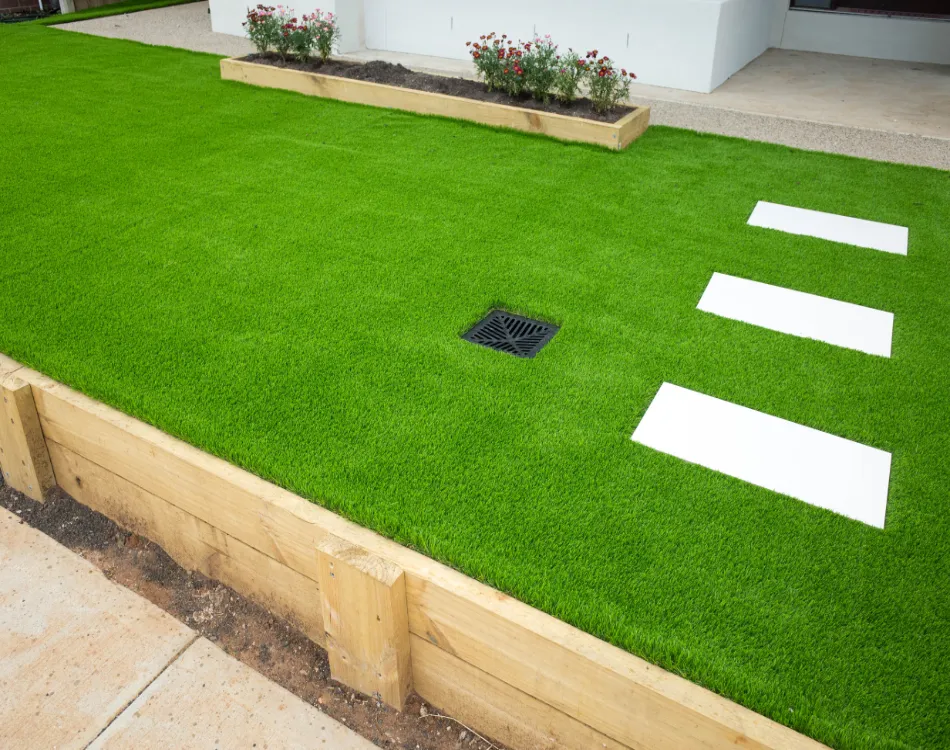Delve Into the Environmental Perks of Opting for Artificial Grass Solutions
The adoption of synthetic grass services offers an engaging chance to deal with pressing ecological difficulties. By dramatically lowering water usage and minimizing the application of hazardous chemicals, these options not only advertise sustainable landscaping yet additionally secure local ecosystems. The lower carbon impact connected with lowered upkeep activities adds to a much more lasting method to land monitoring. The effects of these benefits prolong past mere preservation efforts, increasing inquiries about their long-term influence on environment preservation and general environmental balance. Checking out these measurements reveals a complex interaction worth considering.
Water Conservation Perks
Among the most significant advantages of synthetic grass is its capability to preserve water. Typical grass yards call for substantial irrigation, especially in areas prone to drought or water limitations. In contrast, synthetic grass does not need watering, considerably minimizing the general demand for water resources. This feature is especially helpful in deserts where water scarcity is a pressing concern.
By removing the need for regular watering, fabricated grass adds to sustainable landscape practices and assists mitigate the environmental influence of excessive water intake. The preservation of water extends to the reduction of drainage, which can lead to soil disintegration and waterway contamination.
In addition, the installation of synthetic grass permits towns and home owners to allot water resources much more successfully, concentrating on crucial uses such as drinking water and farming. The change towards fabricated turf not only promotes liable water use but additionally aligns with broader ecological objectives targeted at preserving natural deposits.
As neighborhoods significantly focus on sustainability, the water preservation advantages of synthetic grass offer an engaging instance for its fostering in commercial and residential landscape design projects.
Reduced Chemical Usage
The transition to artificial lawn considerably decreases the reliance on chemical treatments commonly made use of in all-natural yard upkeep. Typical grass monitoring normally includes the application of chemicals, herbicides, and plant foods to advertise development and control parasites. These chemicals can posture dangers to human health and wellness, regional wildlife, and the environment, adding to dirt and water contamination.
In contrast, synthetic turf eliminates the demand for these dangerous substances. Once mounted, it needs minimal maintenance, mostly including regular cleansing and irregular infill replenishment. This decrease in chemical usage not just profits the immediate setting but additionally adds to broader eco-friendly security. By lessening the release of artificial compounds into the community, synthetic grass promotes much healthier dirt and water supply.
Moreover, the absence of chemical runoff linked with man-made lawn setups aids shield neighborhood rivers from contamination, sustaining marine life and preserving biodiversity. Arizona artificial turf. As communities progressively focus on sustainable techniques, choosing man-made lawn presents a sensible service that lines up with ecological preservation goals. Via this change, building owners can delight in lavish green areas without jeopardizing eco-friendly wellness, leading the way for an extra lasting future
Reduced Carbon Impact

Furthermore, the installation of man-made lawn can lead to significant water conservation. Natural yards need significant quantities of water for watering, which not just includes to the carbon footprint connected with water extraction and treatment but wikipedia reference also stress local water resources. In comparison, synthetic grass requires marginal upkeep, requiring no watering, thereby considerably minimizing water use and its associated energy expenses.
In addition, the long life of man-made lawn adds to its lower carbon influence. With a life-span of approximately 15 years or even more, the requirement for regular replacements is decreased, resulting in less waste and lower energy intake in production and taking care of conventional grass alternatives. On the whole, fabricated grass presents a sustainable alternative for eco mindful landscape design.
Environment Conservation
Environment preservation is a crucial factor to consider in the discussion over landscape design choices, particularly when contrasting synthetic grass to natural grass. All-natural lawn yards typically need comprehensive upkeep, including making use of herbicides, chemicals, and fertilizers, which can detrimentally affect local ecological communities. These chemicals can leach right into the soil and rivers, hurting indigenous plants and animals and interrupting local environments.
Man-made turf removes the demand for harmful chemicals, thereby protecting neighboring wild animals and keeping the stability of surrounding ecosystems. The setup of synthetic turf can lead to the conversion of previous yard locations right into even more biodiverse landscapes, such as pollinator yards or native plant areas, find out here which can support neighborhood wild animals.
Eventually, the transition to synthetic grass not just preserves water and decreases upkeep initiatives yet additionally cultivates a more unified relationship between human tasks and the natural setting, advertising environment conservation in the procedure.
Long-Term Sustainability
Long-term sustainability is a crucial consider evaluating the advantages of fabricated lawn over conventional lawn lawns. Among the most considerable advantages of synthetic grass is its resilience; it can last approximately 15-20 years with minimal upkeep, whereas natural lawn calls for frequent reseeding and replacement. This longevity minimizes the requirement for consistent sources, such as water, fertilizers, and pesticides, which are crucial for maintaining a healthy grass yard.
Additionally, synthetic grass adds to a reduction in carbon exhausts related to lawn care equipment. Conventional grass frequently call for gas-powered lawn mowers, trimmers, and blowers, all of which add to air contamination. Arizona artificial turf. On the other hand, man-made grass removes the demand for such tools, advertising a cleaner environment
In addition, the manufacturing of synthetic grass progressively utilizes recycled products, boosting its sustainability Recommended Site account. As manufacturers take on eco-friendly methods, the ecological impact of synthetic grass remains to lessen.

Verdict
The fostering of synthetic turf services presents considerable ecological benefits, consisting of considerable water preservation, minimized reliance on dangerous chemicals, and a reduced carbon footprint. Fabricated turf help in protecting all-natural habitats by minimizing land disturbance and advertising lasting sustainability with the usage of resilient materials. Jointly, these elements emphasize the potential of synthetic grass to add positively to ecological wellness and provide a sensible option to traditional landscaping methods in an increasingly resource-conscious world.
In comparison, man-made lawn does not need watering, substantially reducing the overall need for water resources. By reducing the launch of artificial compounds into the ecological community, synthetic grass advertises much healthier dirt and water systems.
Furthermore, the setup of fabricated turf can result in substantial water conservation. In comparison, artificial lawn requires very little upkeep, needing no watering, thus substantially reducing water usage and its associated energy costs.

Comments on “Professional Arizona Turf Installation Solutions for Home and Commercial Use”